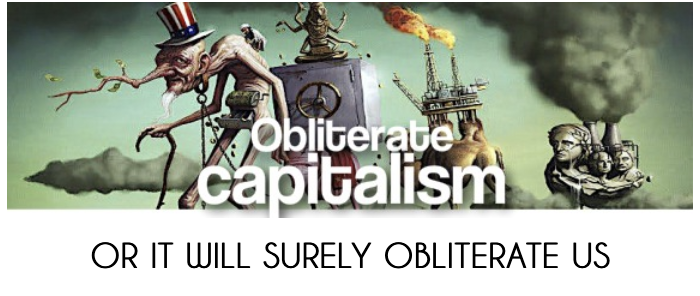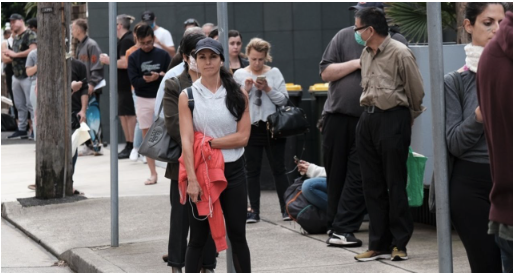In the decade 2009‒2019, 93 percent of economic growth in Australia benefitted just the richest 10 percent of the population. This extraordinary statistic was reported within a study, “Inequality on Steroids: The Distribution of Economic Growth in Australia,” published by the Australia Institute think tank earlier this year.
The data point to a historic accumulation of wealth by the ultra-rich, resulting in record inequality.
The proportion of economic growth monopolised by the richest 10 percent in Australia is significantly larger than that in the United States, Britain, Canada, and the European Union over the last period. These countries and areas nevertheless saw the wealthiest 10 percent of their populations absorbing more than 50 percent of economic growth between 2009 and 2019.
The Australia Institute’s study divided the years 1950‒2019 into five periods, each spanning from the beginning of a national recession to the eve of the subsequent recession.
In the first period, 1950‒1960, just 4 percent of economic growth went to the top 10 percent of the population. In the second period, 1961‒1981, this figure was 16 percent, leaving 84 percent of the benefits of economic growth for the lower 90 percent of the population.
These decades roughly coincide with the rise and fall of post-World War II reformism—like other advanced capitalist countries, the Australian ruling elite confronted the threat of social revolution fuelled by determined struggles waged by different sections of the working class. Limited wealth distribution measures were enacted, together with the expansion of public healthcare, education and other social services.
There was a major shift in the third period, 1982‒1990: 48 percent of economic growth in these years benefitted the top 10 percent. This drastic increase in the proportion of wealth funnelled to the top of society was engineered by the Hawke-Keating Labor governments (1983‒1996), which worked hand in hand with the trade unions to privatise and deindustrialise the economy, drive down real wages, and boost corporate profits at the expense of the social position of the working class. This was part of a global process of pro-business “free market” restructuring in the 1980s and ’90s.
In the fourth period examined by the Australia Institute, 1991‒2008, 36 percent of economic growth benefitted the top 10 percent. This served as the prelude to the final period, 2009‒2019, when nearly all economic growth was monopolised by the most affluent 10 percent of the population. This decade was presided over almost evenly by consecutive Labor and Liberal federal governments, each of which spearheaded the process of extreme wealth accumulation by the financial elite.
There is no question that social inequality is currently accelerating even further. The Labor government of Prime Minister Anthony Albanese, again with the critical assistance of the trade union apparatuses, is enforcing major real wage cuts for workers amid a cost of living crisis. Big business reaped enormous subsidies during the initial stages of the COVID-19 pandemic, and continues to register record profits. At the same time, the government is funnelling hundreds of billions of dollars to the war machine as it lines up with US imperialism in preparation for a war of aggression against China.
The Australia Institute made no serious attempt to politically analyse its findings on the historic distribution of economic growth in Australia. The so-called progressive think tank is itself part of the political establishment, receiving funding from wealthy patrons as well as from sections of the trade union bureaucracy.
The “Inequality on Steroids” report suggested that one cause of extreme inequality has been “the weakening of unions in the Australian labour market.” In reality, the unions are complicit in the hyper-accumulation of wealth, working with corporations against workers in imposing industrial agreements that erode real wages.
The Australia Institute concluded its study with a nervous warning to the financial elite that escalating inequality threatens social unrest. “How long can Australia sustain an economic and social setting which excludes the bulk of its people from sharing in the economic gains?” the report asked.
The devastating social consequences of extreme social inequality was underscored in another report, commissioned by the Actuaries Institute and titled, “Not A Level Playing Field—Exploring Issues of Inequality.”
This paper, issued last May, compared measures of social well-being between people in the highest wealth quintile (the top 20 percent of the population) and the lowest wealth quintile (the bottom 20 percent). Unsurprisingly, the poorest layers of the population experience significantly worse conditions in a wide range of measures, spanning physical health, mental health, drug abuse, education, and many more.
For instance, the rate of home ownership in the lowest quintile is 34 percentage points lower than that of the highest quintile. The report notes that for younger people (aged 25‒34) in the lowest quintile, the rate of home ownership has more than halved since the 1980s. Those in the lowest quintile are four times more likely to have been recently unable to pay rent or mortgage costs. This situation is worsening, with housing costs rapidly rising for both renters and mortgage-payers. The report points out that since housing costs take up a greater proportion of disposable income for less wealthy households, the increases in housing costs will affect the poorer population more severely, exacerbating already severe inequality in home ownership and housing stress.
Grim outcomes of inequality are seen regarding health, both mental and physical. Those in the lowest quintile are twice as likely to commit suicide, and twice as likely to suffer psychological distress than those in the highest quintile. Australians in the lowest wealth quintile were also found to be three times more likely to die of COVID-19 infection than those in the highest quintile.
Additionally, those in the bottom quintile are about three times as likely to have been the recent victim of a violent crime, seven times as likely to experience homelessness, and thirteen times as likely to give birth as a teenager.
The Actuaries Institute report also described educational attainment as both a driver of inequality and an outcome affected by inequality. The Labor government’s education minister Jason Clare frequently asserts that public education in Australia serves as “the great equaliser in an unequal world”—but the reality is very different.
Students from poorer households are unlikely to achieve the same grades as those from wealthier backgrounds. This is due to the impact of inequality, such as housing stress, greater risk of crime and violence, and food insecurity, all of which worsen learning outcomes. High school learning outcomes strongly affect prospects for university admission, and by extension, career prospects. In this way, those from disadvantaged backgrounds are more likely to remain disadvantaged in life, and in turn have children who will face the same disadvantages.
This flows directly from the systematic under-staffing and under-funding of public schools, especially those in working class areas, and the lavish provision of public subsidies for private schools, including elite high-fee institutions.
The “Not A Level Playing Field” paper concluded by noting that there was “strong evidence” of “pressures that will lead to greater future inequality, unless policy action is taken.”
The only “policy action” being taken by the Australian ruling class is that which fuels inequality by eroding working class living standards while boosting corporate profits and the personal wealth of a narrow upper class layer. This polarisation of wealth will inevitably trigger enormous social and political upheavals.
Print this article

Unfortunately, most people take this site for granted.
DONATIONS HAVE ALMOST DRIED UP...
PLEASE send what you can today!
JUST USE THE BUTTON BELOW

[premium_newsticker id=”211406″]
![]() This work is licensed under a Creative Commons Attribution-NonCommercial 4.0 International License
This work is licensed under a Creative Commons Attribution-NonCommercial 4.0 International License
ALL CAPTIONS AND PULL QUOTES BY THE EDITORS NOT THE AUTHORS






